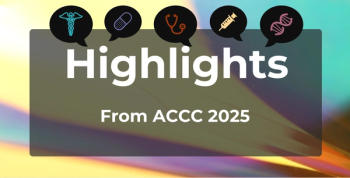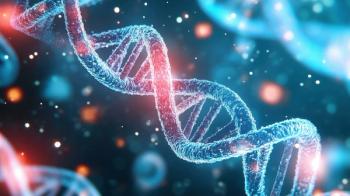
Study on Heart Rhythm Stabilizing Drugs Shows Importance of Getting to Patient Quickly
While overall data did not suggest a benefit for the drugs, a look at the effects on patients whose cardiac arrests were witnessed shows the benefit of reaching patients quickly.
For years, emergency medical technicians (EMTs) have used a pair of drugs—lidocaine and amiodarone—to stabilize patients in cardiac arrest if they failed to respond to electric shock treatment. They have done so despite the lack of the gold standard—a large, randomized clinical trial—showing the drugs worked.
Now, EMTs and emergency room physicians have their evidence. Peter Kudenchuk, MD, a cardiac electrophysiologist and professor of medicine at the University of Washington, on Monday presented results of such a trial at the 65th Scientific Session of the American College of Cardiology. Findings were simultaneously published in the New England Journal of Medicine.1
While the overall data suggested the drugs’ benefits were mixed, a closer look shows that the earlier patients are treated, the better their chances of survival. That was Kudenchuk’s message, both in his presentation in the late-breaking session and in a press conference afterward. Among patients whose cardiac arrest was witnessed by a bystander—thus ensuring timely attention from EMTs—the drugs improved survival by 5%.
“You can see these results as a cup half empty or a cup half full,” Kudenchuk said. “From a statistical perspective, neither drug significantly improved survival to hospital discharge in the overall group of treated patients. “Still, a beneficial clinical effect from these medications is undeniable. Both drugs significantly improved the chances of survival to hospital admission, so they clearly did their job in stabilizing dangerous heart rhythms and getting patients to the hospital alive.”
The trial was the first double-blind, placebo-controlled study that measured whether amiodarone and lidocaine fulfill their purpose—ensure that patients live long enough to leave the hospital after suffering out-of-hospital cardiac arrest triggered by either ventricular fibrillation or pulseless ventricular tachycardia. More than 80,000 cases per year are caused by these heart rhythms. Paramedics are able to restore a stable heart rhythm more than half the time by using defibrillator shocks, but turn to the drugs when shocks fail. It is believed that amiodarone and lidocaine stabilize the electrical signaling within the heart.
“We’ve been using lidocaine for 50 years, and amiodarone for over a decade, yet we still don’t know if they work,” Kudenchuk said. “That was the rationale behind this trial.”
Putting the drugs in a real-world setting and comparing them against “ground zero,” or no treatment, he said, would “let the drugs shine or let the drugs crash.”
Several features distinguished this trial, which incorporated 10 research sites of the Resuscitation Outcomes Consortium, a collaborative that involves paramedics and emergency department physicians across the United States and Canada. A huge number of patients were screened—more than 38,000—and its design ensured that neither patients nor providers could tell who received a study drug and who received a saline placebo.
The trail randomized 3026 participants to receive either 450 mg of amiodarone, up to 180 mg or lidocaine or the saline. Both the drugs and the saline were provided to paramedics in indistinguishable boxes with 3 syringes. In total, 974 patients received amiodarone, 993 received lidocaine and 1059 received saline.
According to the study, the overall results—which combined patients whose cardiac were witnessed and those who were found some time after the event—do not seem that impressive. Of the 3026 patients, the 24.4% of those taking amiodarone survived to hospital discharge, followed by 23.7% of those lidocaine and 21.0% of those taking placebo.
But among the 1934 patients whose cardiac arrest was witnessed, survival increased from 23% to 28% for those who received 1 of the 2 drugs compared with the saline. Kudenchuk said if drugs were used consistently in this population, it would translate into about 1800 lives being saved in the United States each year.
Using the drugs revealed other benefits: Patients who received them needed fewer subsequent electric shocks, and less drug therapy to stabilize the heart rhythm. “Perhaps most importantly,” Kudenchuk said, “You were more likely to survive and make it alive to the hospital.”
When asked if police officers or other non-physicians could be trained to administer drugs in senior centers, just as they have learned to use AEDs, Kudenchuck said probably not—but he said the evidence that early treatment matters shows why the public must become trained in cardiopulmonary resuscitation (CPR). Authors of an accompanying editorial in NEJM agreed.
“We emphasize the benefit of bystander initiated CPR, for which the current trial showed an absolute survival benefit of almost 10 percentage points, eclipsing any effect of drug intervention,” wrote Jose A. Joglar, MD< and Richard L. Page, MD.2
References
1. Kudenchuk PF, Brown SP, Daya M, et al for the Resuscitation Outcomes Consortium Investigators. Amiodarone, lidocaine, or placebo in out-of-hospital cardiac arrest [published online April 4, 2016]. N Engl J Med. 2016. DOI: 10.1056/NEJMoa1514204.
2. Joglar JA, Page RL. Out-of-hospital cardiac arrest—are drugs ever the answer? [published online April 4, 2016]. N Engl J Med. 2016. DOI: 10.1056/NEJMe1602790.
Newsletter
Stay ahead of policy, cost, and value—subscribe to AJMC for expert insights at the intersection of clinical care and health economics.









































